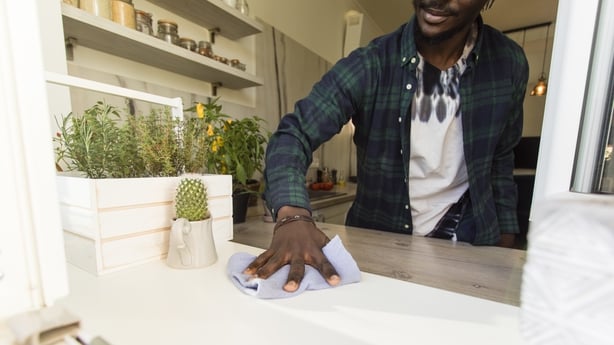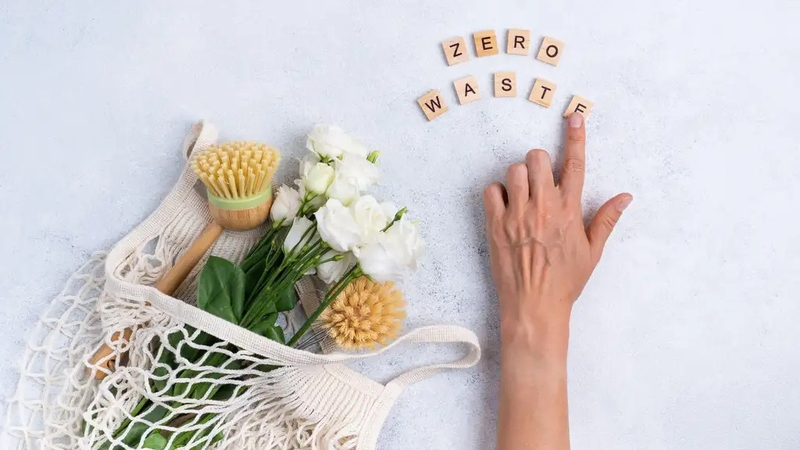While the spring sunshine streams in and white blossom is at its best, Mother Nature reminds us how important it is to be mindful of products we use – and their impact on our health and the environment.
As such, Queen of Clean, Lynsey Crombie (@lynsey_queenofclean), home expert and best-selling author is here to help you embrace the concept of ‘spring cleaning with clean products.’
To put you on the front foot, Crombie has put together an essential guide for steering clear of harsh chemicals and opting for eco-friendly alternatives – ensuring a fresh start for both your home and wellbeing…
Make your own cleaning products
"Making your own cleaning products can be a rewarding and eco-conscious alternative to store-bought options laden with chemicals," highlights Crombie.
"By crafting your own cleaning solutions, you not only have control over the ingredients – but also contribute to reducing waste from single-use plastic packaging."
Multi-purpose cleaner: "Fill half a bottle with rubbing alcohol, add a quarter of white vinegar and 25 drops of essential oils for fragrance; ideally choose ones with antibacterial properties such as citrus, tea tree and eucalyptus."
Window cleaning: "Use white vinegar or rubbing alcohol neat."
Cream cleaner: "Mix a small capsule of bicarbonate of soda and drop of washing up liquid together. Mix until a thick paste, a bit like making icing sugar and use this to clean surfaces such as your bath, bathroom sink, and hob."
Fabric refresher spray: "Half fill a bottle with water, add 20ml of bicarbonate of soda and your favourite essential oils for fragrance."

Opt for using natural tools
Using natural tools for cleaning the house is a more holistic approach to maintaining a clean and healthy living environment, notes Crombie.
"While minimising reliance on synthetic products and reducing environmental impact."
"Embracing natural tools harnesses the inherent cleaning power of items readily found in nature, offering effective and eco-friendly alternatives."
She says to ditch disposable wipes and paper towels, and instead choose reusable and microfibre cloths, which are much more sustainable.
"When it comes to dusters and scrubbing brushes choose ones made from bamboo and wool."
Throw open the windows
Throwing open the windows during spring cleaning is a simple way to refresh and invigorate your living space…
"Opening the windows not only allows stale air and lingering odours to escape but also brings in fresh air, revitalising every corner of your space," says Crombie.
"This natural ventilation also helps to reduce indoor air pollutants as well as naturally banish smells, giving your home that fresh feeling without the need for using chemical-based air fresheners and plug-ins."

Use a steam cleaner
Using a steam cleaner has numerous environmental benefits compared to traditional cleaning methods that rely on chemical-laden products, observes Crombie.
"Firstly, steam cleaning utilises only water, eliminating the need for harsh chemicals that can pollute the air and waterways." She continues. "Steam is a natural way of killing dirt, germs and bacteria and lifting it from your home."
As Crombie points out, you can steam not only your floors but your upholstery, oven, shower screen and windows. "Steam will also refresh clothes such as jackets and outerwear to save you dry cleaning."
Freshen up carpets and rugs
Rather than using a chemical in a carpet cleaner, instead spot clean any marks with white shaving foam, says Crombie. "And to refresh the carpets and rug, sprinkle them with bicarbonate of soda, leave overnight and then vacuum off in the morning."
The bicarbonate of soda will soak up any trapped in odours and help loosen stains, says Crombie. "You can also take rugs and mats outside, give them a good bash and then hang in the fresh air and sunshine for a few hours.
"Sun is a natural disinfectant and will also help remove stains."

Go green with your laundry
When washing cushion covers and throws for your big spring clean, Crombie says to choose eco-friendly products in reusable packaging for greener laundry.
"Or make your own detergent by grating up a bar of soap and mixing with hot water until dissolved.
"For a liquid soap detergent, use soda crystals, which are available in most supermarkets these days, or try soap nuts [dried shells or husks from the soapberry nut]."
